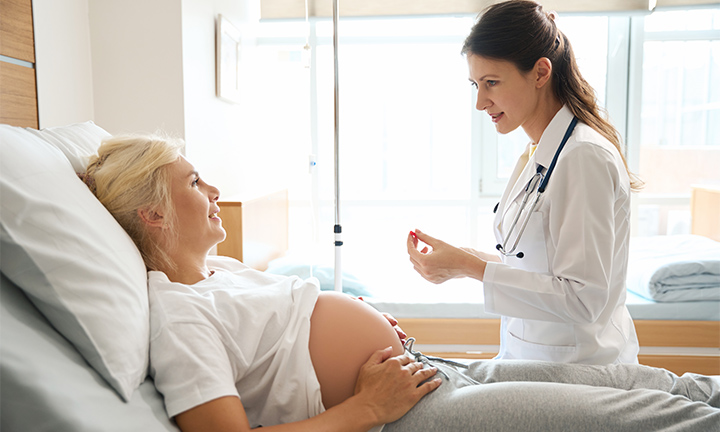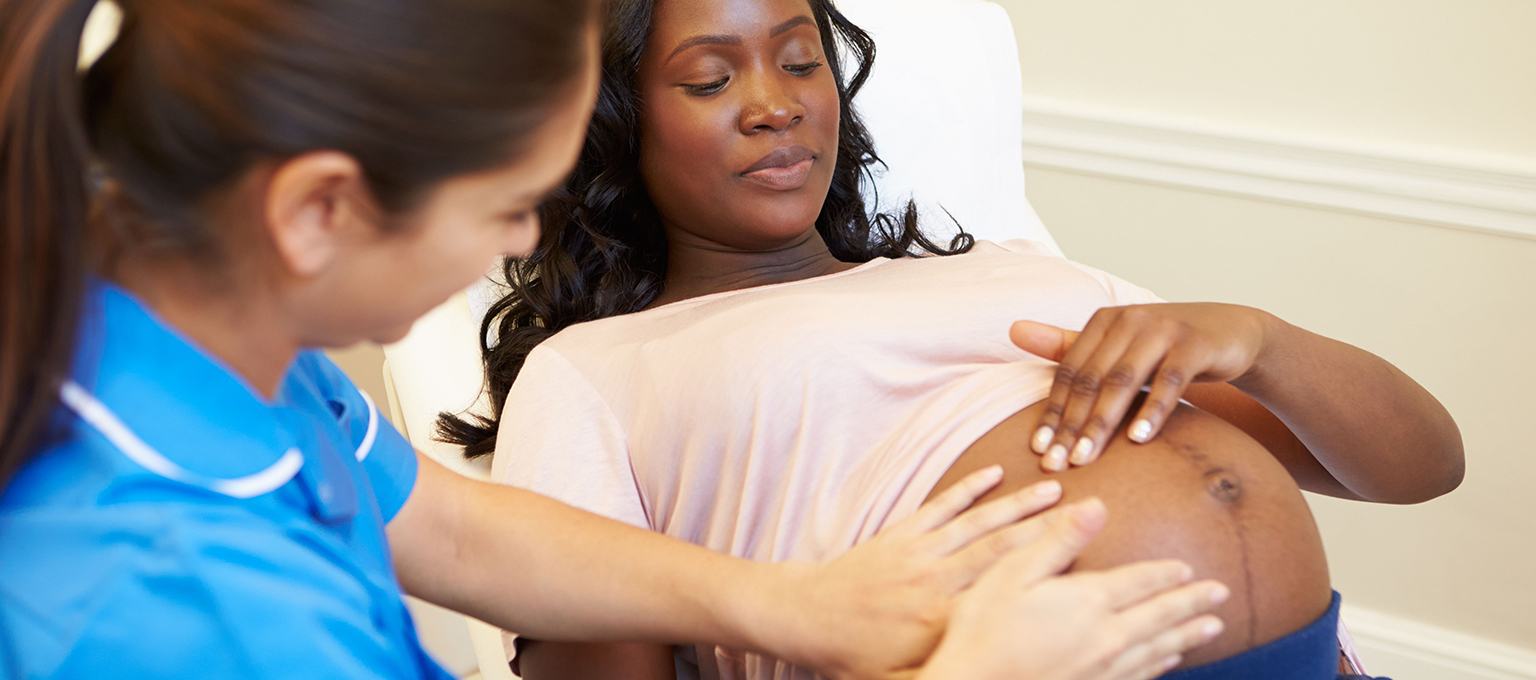
Diastasis Recti During and After Pregnancy
Understanding Diastasis Recti: A Common Postpartum Concern
Diastasis recti is a condition that frequently affects pregnant and postpartum individuals. It occurs when the rectus abdominis muscles – commonly known as the "six-pack abs" – separate due to the stretching caused by pregnancy. This separation can lead to a visible bulge in the abdomen even months or years after giving birth. While not inherently painful, diastasis recti can contribute to symptoms such as lower back pain, poor posture, and core weakness, making daily movements more challenging.
Here’s what to know about diastasis recti:
Although it affects up to 60% of postpartum individuals, many aren’t aware of diastasis recti or how to manage it. In this article, we’ll cover symptoms, how to check for it, and simple ways to help rebuild strength and support recovery.
What Is Diastasis Recti (Abdominal Muscle Separation)?
Diastasis recti, known more formally as diastasis recti abdominis, is a condition that can happen when the rectus abdominis muscles (think the right and left sides of a six-pack) separate from each other—such as during pregnancy when the uterus grows and in the first few weeks after giving birth—and don’t return back to their original position.
This vertical separation of the abdominal muscles might not be obviously visible before or after pregnancy due to your stretched abdomen, but after you give birth you may notice a bulge in your abdomen when these muscles are tensed. For example, this bulge might show itself when you sit up from a lying position. Diastasis recti can sometimes lead to issues such as back pain. You can read more about healing after childbirth here.
Diastasis Recti Symptoms: How to Identify and Recognize the Signs
Diastasis recti usually appears as a bulge in the middle of your abdomen where your rectus muscles have separated and which becomes apparent when you try to flex or tighten your abdominal muscles. It might not be immediately obvious that you have diastasis recti when you’re pregnant, or even immediately after. However, your healthcare provider might be able to detect it in your third trimester during a physical exam. As you lie on the exam table and gently flex your abdominal muscles, your provider may feel a separation. In some cases, an ultrasound may also be performed.
The condition itself is normally painless, but it can sometimes lead to some lower back pain during and after pregnancy, or make it difficult to do everyday tasks that involve lifting things or bending in certain ways, because the muscles have stretched, and therefore weakened. As well, as the visual symptoms we mention in the section below, you may also notice you have some urine leakage especially when you cough or sneeze, pain during sex, or poor posture.
If, after delivery, you suspect you might have developed diastasis recti, you can do a self-check before seeing your healthcare provider for a diagnosis.
Pregnancy Weight Gain Calculator
Fill out your details:
How to Check if You Have Diastasis Recti
So, how do you know if you have diastasis recti? Here is one method of checking for this condition:
Visual Signs: What Does Diastasis Recti Look Like?
As we mentioned above, diastasis recti might not be obvious during pregnancy, but during the postpartum period you may notice:
You can check out our article on how a postpartum belly may look and feel after giving birth, but if you suspect you have diastasis recti, contact your healthcare provider for a diagnosis and treatment options.
Main Causes of Diastasis Recti (Abdominal Separation)
There isn’t a wealth of information about what exactly can cause this condition, but your pre-pregnancy weight and pregnancy weight gain are not thought to have much of an impact on whether or not you develop this condition if you’re in the normal BMI range.
But there are a few other factors that may make you more likely to develop diastasis recti:
Treatment of Diastasis Recti
It’s important to remember that diastasis recti is a muscular condition that may or may not require treatment. If you’re diagnosed with diastasis recti, your healthcare provider may refer you to a physical therapist who will advise you on appropriate post-pregnancy exercises that can strengthen your ab muscles again, as well as provide a timeline for when you can start to exercise again after giving birth.
In rare cases, your healthcare provider may recommend surgery for your diastasis recti. Your provider will give you more personalized advice if physical therapy hasn’t fixed the problem.
Best Postpartum Exercises for Diastasis Recti Recovery
If you’re wondering how to heal diastasis recti with exercise, performing gentle exercises and movements that engage the abdominal muscles is recommended. It’s always best to follow your healthcare provider's and physical therapist's advice, but here are some dos and don’ts when exercising to help treat your diastasis recti.
How to Fix Diastasis Recti Years Later
The good news is, with some patience and consistency, you can heal your diastasis recti whether it’s shortly after giving birth or years later. As always, it’s best to consult your healthcare provider and get a suitable exercise plan from your physical therapist to start you on your healing journey. You can also follow some of our advice above on what to do and what not to do when exercising for diastasis recti.
Prevention of Diastasis Recti During Pregnancy
If you’re wondering how to prevent diastasis recti, there are some things you can do to help decrease your risk. During your pregnancy, you'll want to check with your healthcare provider before beginning or continuing any exercise program. However, there are a variety of exercises you can do during pregnancy to help strengthen your abdominal muscles.
For example, with your provider’s OK, try kneeling on all fours and pull your ab muscles inward toward your back while inhaling and exhaling. Keep your back straight while doing this. Take a quick look at our Exercising While Pregnant guide for more pregnancy fitness inspiration.
It’s also important to practice good posture and maintain a healthy body weight during your pregnancy. This helps alleviate some of the pressure that might lead to back pain as your belly grows. For more information on possible recommended weight gain ranges for various pre-pregnancy BMIs, try our Pregnancy Weight Gain Calculator and chat with your healthcare provider.
Kegel exercises can also help prevent or alleviate the back pain that may be associated with diastasis recti, and can possibly help with other issues you may experience before and after delivery, such as any urinary or bowel incontinence or painful sexual intercourse.
If you’re not familiar with Kegels, here's what to do: simply squeeze the pelvic floor muscles as if you were trying to stop a flow of urine. Hold for about 3 to 10 seconds (you can work your way up to 10 seconds over time), and then release. Build up the number of repetitions you do until you can do about 10 or 20 repetitions at a time, a few times a day. Your healthcare provider can help you master Kegels, so ask for help if you need it. Done regularly over time, Kegels can help you build the strength of your pelvic floor muscles, and this may help relieve some of the associated symptoms of diastasis recti. And the best thing—you can do Kegel exercises anywhere—even when you’re watching tv!
The Bottom Line
You’ll no doubt be amazed at what your body has achieved over the past several months as you hold your newborn baby. It’s impressive, and you should be proud. Still, over time you’ll become familiar with your post-baby body and the ways it has changed. If you think you might have diastasis recti, check in with your healthcare provider for specific advice to help these weakened muscles get stronger. Be patient with yourself and your body, and give yourself the time to deal with this abdominal muscle separation and to heal and recover from childbirth.
Don't forget to download our free Pampers Rewards App to save on future Pampers purchases and get access to exclusive offers.
- American College of Obstetricians and Gynecologists. Your Pregnancy and Childbirth: Month to Month, 7th ed. (Washington, DC: American College of Obstetricians and Gynecologists, 2021).
- Cleveland Clinic. “Diastasis Recti.”
- Kaiser Permanente Thrive: Postpartum Fitness
- US National Library of Medicine: Umbilical Hernia Repair and Pregnancy
- US National Library of Medicine: Diastasis recti abdominis - a review of treatment methods.
- US National Library of Medicine The general surgeon’s perspective of rectus diastasis
- US National Library of Medicine: Diastasis recti abdominis during pregnancy and 12 months after childbirth
- UT Southwestern Medical Center: Lingering abdominal bulge after baby? It could be diastasis recti
- US National Library of Medicine: Prevalence and risk factors of diastasis recti abdominis
- US National Library of Medicine: Pelvic floor muscle exercise for chronic low back pain
Read more about Pregnancy
Related Articles
Join a World of Support
through Pregnancy and Parenthood.
TRACK WITH TOOLS
LEARN WITH EXPERTS
GET REWARDED













